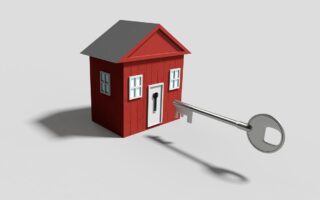Termites in French Houses


Termites – the underground menace eating your house from the inside out
When buying a house in France, the vendor is obliged to have a termite report carried out.
If you live in a termite-infested area in France, you must, by law, supply a ‘termite-free’ certificate when you sell a house.
You can find out if your area is designated as infested from your local town hall. Any check you undertake must be carried out by a qualified expert (see list on www.ctba.fr ). The expert will check all parts of the house, including the garden, the adjoining buildings, the basement and so on, using a punch (to sound out wood) and a sound or movement detector.
You can also have a termite check done even if you are not selling the house, simply to see if you have an infestation. The expert will be able to inform you whether treatment is needed, but you should be aware that the firm that does the checking is not, by law, allowed to supply anything with which to treat any infestation. This is in order to maintain impartiality.
After the check, you’ll receive a detailed report. If an infestation needs to be treated, there are numerous options, including chemical barriers and traps, and the solution is decided case by case. A list of certified treatment companies can be found at www.ctba.fr .
Why are termites a problem?
Termites feed on wood and in the wild serve an important function by converting dead trees into organic matter. However, when they feed on the wood in buildings, they can cause structural damage. They tend to attack wood that is close to the ground and eat from the inside out, defying detection for years. By building ingenious mud tubes, termites can cross many feet of concrete, brick, cinder block, treated wood, or metal termite shields, making it possible to reach the upper floors of a structure. They also eat other forms of cellulose, including books.
Under favourable conditions, a colony of 60,000 termite workers can consume a one-foot length of two by four in as little as four months. Under less ideal conditions, it can take as long as eight years for termites to cause noticeable damage.
However, termite activity may remain undetectable even after serious damage is done. Reasons include:
- Termite swarms that have been ignored by the current owner of the house or building.
- Termite activity that is ongoing behind walls and under the floors.
- Termite activity that is concealed behind stored materials.
- Termite activity that is occurring beneath the surface of visible wood beams.
What are termites?
Termites, whose name comes from the Latin ‘termes’, which means rodent worm, differ from other xylophagous (wood-eating) insects, because they are organised into a society, rather like ants and bees.
There are over 2,000 species of termite but only seven have been found in France. Five of these are ‘underground’ termites (Rhinotermitidae) and two are ‘dry wood’ termites (Kalotermitidae). The worst damage is generally caused by underground termites.
Termites need a water supply in order to exist, but this can be very minimal – even condensation on a water pipe will suffice, or a leak in a poorly maintained wall. Temperature is also important, which might be provided by the climate, or artificially by heating or building insulation. The termite problem in France was once confined to the south but is spreading northwards as the summers become warmer, and now very few departements are completely without their presence.
Where do they live?
Generally, the main termite colony is situated underground – sometimes as deep as 20 feet below the soil surface. A termite colony takes about five years to mature and may include up to 200,000 workers. These are the termites that eat wood and provide food for the others (king, queen, nymphs and soldiers). The workers dig or build ‘galleries’, inside which they to and fro incessantly in search of food. These galleries are always free of sawdust, unlike other wood-borers such as the long-horn beetle, lyctus beetle, or furniture beetle. Termites penetrate into houses along mortar joints, in drains, waste pipes, electric cable ducts, inner partitions, and so on, but always away from the light. This makes them difficult to detect.
How do termites spread?
- By swarming: in the first few days of spring. Discarded termite wings are often the first sign of termite activity in a building, as they drop their wings once they have found a mate.
- By propagation: when termites are moved – for instance, in infested wood. At least 100 individuals are needed to found a new colony.
Share to: Facebook Twitter LinkedIn Email
More in activity, food, garden, heating, legal, renovation
By FrenchEntrée
Leave a reply
Your email address will not be published. Required fields are marked *



